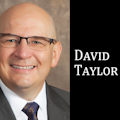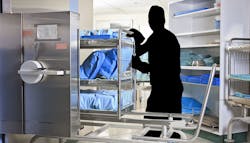Many Sterile Processing (SP) leaders are struggling to retain and recruit high quality, experienced and certified technicians, which makes it increasingly challenging to complete critical responsibilities and meet daily productivity requirements. Not surprisingly (and especially in light of the pandemic), facilities are experiencing a greater need for traveling SP technicians (in some organizations, travelers now account for 25-50% of the SPD’s team).
The SP discipline requires highly skilled individuals who can critically think and problem solve even the most minute details. Unfortunately, some senior administrators and human resource (HR) leaders still view an SP technician’s role as “entry level” and are reluctant to allocate adequate resources to attract high-quality technicians and provide career ladder growth opportunities, reasonable wages and other incentives to increase job satisfaction and employment longevity. Although traveling technicians can help fill critical vacancies and keep the department running at capacity, there are steps facilities should take to keep quality, safety and positive outcomes the number one priority.
Choosing a reputable agency requires due diligence to help SP leaders sort through viable candidates more effectively and efficiently. For example, an agency that knows the hiring organization and its culture can help provide a better fit with the travelers they provide for the interview process. Reputable agencies should know their candidates and provide those who have minimum levels of experience with validated competencies (and, ideally, those who are certified). They should also prescreen their traveler candidates (ensuring background checks and drug screens are completed prior to arrival); require annual physical examinations to declare traveling technicians fit for duty (including ensuring immunizations are current); have a current Basic Life Support certification that will not require renewal while on assignment; ensure certifications are up to date (or will be managed by the traveler and not require special accommodations from the hiring organizations, such as time off or other assistance); and be able to provide a replacement traveler within a specified period (i.e., 24 to 72 hours) in the event the traveler must leave suddenly or is let go by the healthcare organization.
In the near term, travelers may be the answer to cover vacancies; however, reasons behind the staffing shortage of permanent employees must be proactively addressed. The time it takes to find, interview and onboard new employees and travelers costs more than dollars. One bad outcome can jeopardize staff and patient safety and negatively impact the organization’s reputation. What follows are some strategies SP leaders can adopt to retain their top talent.
Give thanks
- Recognize staff members for their hard work and accomplishments. This can include handwritten notes, printed certificates, recognition in the facility’s newsletter, and verbal recognition during staff huddles and interdisciplinary meetings.
- Consider alternative approaches to retain and recognize the SP team (e.g., career ladder and mentoring programs, pay increases and elevated titles for certification attainment, and facility- or departmental-provided awards).
- Offer monetary tokens of appreciation such as gift cards, movie tickets, meal tickets to the organization’s cafeteria, or concierge services such as dry cleaning or car washes.
Prevent burnout
- Create a secure and consistent work environment.
- Treat everyone equally, set realistic and understood expectations and validate performance standards.
- Take an active role in helping staff members throughout the day (rounding the departmental areas frequently and assisting on the floor as needed).
- Explore in-house counseling services for those feeling overwhelmed, exhausted and stressed (a common issue seen over the course of the pandemic).
Take a closer look at compensation
- Tie annual pay increases to performance.
- Create a tiered bonus structure.
- Incentivize extra shifts and offer shift differentials or on-call pay opportunities.
- Compensate those who are certified (ideally, pay should increase with the number of certifications held; even modest increases can improve retention).
Foster professional growth
- Consider offering in-house education and training support to assist those seeking certification or advancement within the department.
- Encourage local chapter involvement and participation in annual conferences.
- Offer tuition reimbursement for secondary education.
Conclusion
When it comes to staffing concerns and mitigation, SP leaders should think long term and remember that challenges pertaining to staffing, compensation and respect for the work performed in the SPD existed long before the pandemic. Senior administrators and SP leaders need to consider the value their SP team members bring to the table each day and use innovative thinking and strategies to keep more of their existing technicians, while ensuring that any vacancies are filled by the very best candidates who will fit with the organization’s culture and keep quality and safety at the forefront.
David Taylor III, MSN, RN, CNOR, is an executive healthcare consultant for Resolute Advisory Group LLC, based in San Antonio, Texas. He has served as a contributing author for HSPA since 2019.
About the Author

David Taylor
Principal, Resolute Advisory Group LLC
David L. Taylor, MSN, RN, CNOR is an independent hospital and ambulatory surgery center consultant and the principal of Resolute Advisory Group LLC, in San Antonio, Texas.
